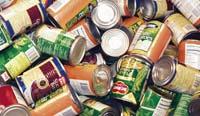Nanotechnology in the menu of the day
2007/07/01 Galarraga Aiestaran, Ana - Elhuyar Zientzia Iturria: Elhuyar aldizkaria
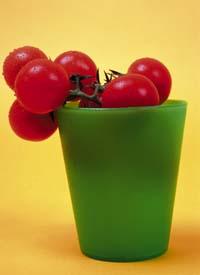
The food industry is no exception, proof of this is that the term of English nanofood is increasingly widespread. With this word, at any time, foods and beverages produced using techniques or tools of nanotechnology, from the field or nursery to the belly of the consumer.
Producers want to use nanotechnology for various purposes. Among other things, it is expected to increase the efficiency of the processes, thus reducing the demand for energy, water and chemical substances in the production and generation of waste.
In addition, it seems that nanotechnology has interesting applications in packaging, in food safety and in the sensory characteristics of food-color, flavor, both structural and functional, that is, related to nutrition and special needs.
Nanotechnology on board
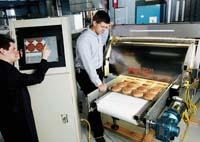
For the moment, nanotechnology is less used in the food industry than in other areas. The magazine specializing in economics and finance Forbes, for example, has produced in recent years a list of the ten best or most modern products made of nanotechnology, without food or drink.
However, there are already existing products in the market (not yet in Europe) or available to be marketed, many of them with innovation in packaging. The purpose of the containers is to protect the food to avoid its deterioration. Now, through nanotechnology, they want to get food to last longer using special containers.
Nanotechnology techniques allow to improve the permeability and mechanical or thermal resistance of materials.
One of the examples is the wrapping film Durethan KU2-2601 developed by Bayer Polymers. The function of packaging films is to avoid drying the food and to protect it from external humidity and oxygen. The new film is enriched with silicate nanoparticles, which allows it to be more resistant, resistant and heat-resistant than conventional ones. In addition, it does not allow the entrance of oxygen or the extraction of humidity, which allows the food to remain longer than normal.
Clay nanoparticles have also been used to improve the properties of plastics. The Voridan and Nanocor companies have created a nanocomposite called Imperm to make beer bottles. The problem is that plastic bottles are lighter than glass bottles and cheaper than cans, but they are not suitable for bottling beer because alcohol reacts with plastic. As a consequence, the duration of the product is significantly shortened.
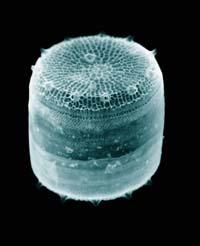
The structure of the Imperm nanocomposite does not react with alcohol. On the other hand, the carbon dioxide of the beer cannot escape and the external oxygen cannot penetrate. This allows the beer to spend six months in bottle with the same characteristics as the first day.
Fighting the destroyers
Nanotechnology is also used to create containers that protect from microorganisms and fungi that damage food. For example, a developing Kodak film has the ability to absorb oxygen from the inside of the container. Therefore, microorganisms cannot grow, so the food does not deteriorate.
Another strategy is to use sensors that warn that food is beginning to deteriorate. For example, the company Kraft is developing a ship with electronic tongue. The container has a network of nanomensors that detect the gases released when beginning to deteriorate food. As soon as something is detected, the sensor changes color, which allows the consumer to know whether the product is fresh or not.
This type of packaging is called smart. And the detection spray by nanobioluminescence is also smart. This spray developed by AgroMicron contains a protein that is associated with bacteria such as Salmonella or E. coli. When associated with them, the protein emits shine, the more bacteria there are in the food, the more links are generated and, therefore, the more brightness emitted. This allows to know at first sight the presence of micro-organisms in food or drink and their number.
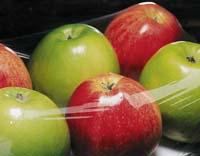
A similar strategy is being used by European Union researchers in the Good Food Project to ensure food security. A portable nanosensor that detects chemical compounds, pathogenic microorganisms and toxins is being developed. This allows to analyze the food at any time (in the hamlet, in the production, in the transport, in the collection, etc.) without having to send the samples to the laboratory. With this, you can save time and money.
In this same project, DNA chips are also being investigated for the detection of pathogens. This technique allows detecting and identifying pathogens that damage meat or fish, as well as fungi that damage the fruit. Later it is intended to create a new chip that allows to detect possible pesticides in vegetables and fruits.
Other techniques used in other areas also have application in the food industry. For example, at the University of Bonn, packaging for the conservation of meat has taken advantage of the lotino effect. In the lotus leaf the water slips thanks to its nanosecond of wax on the skin, and from this effect create clothes that are not stained. Now you have found another application.
For their part, researchers from the University of Leeds have shown that nanoparticles of magnesium oxide and zinc oxide are very effective for the destruction of microorganisms and can be used in substitution of silver nanoparticles. These have also been used in clothing and are now studying their application in packaging and packaging.
Nanotechnology is also useful in food monitoring systems. Fifty years ago, the military created identification by RFID or radiofrequency. This same system is suitable for food monitoring.

The most widespread product identification system is barcodes, but in front of them the RFID has great advantages as it should not be read manually and individually. On the contrary, this system allows you to receive hundreds of signals automatically per second, which allows you to know the location of each product at any time. Now, through the integration of nanotechnology and electronics, several groups investigate to create an efficient and inexpensive system of application to food.
Inside the food
Nanotechnology is used not only to improve the characteristics of packaging and food safety, but also to produce food drinks with special characteristics. Among its objectives are the preparation of healthier, tasty and able to adapt to the tastes and needs of each consumer.
One of the keys are nanocaps. In the tiny capsules the desired components can be introduced to release the inside content where desired and achieve the desired effect. The capsules can be designed to open quickly (by contact with any skin) or open slowly (thus slowly release the interior), at a certain temperature (at body temperature) or with moisture.
For example, a prestigious Australian bakery makes bread with nanocaps with tuna oil. As tuna oil has a lot of omega-3, it is very good for health, but it has a strong flavor. However, the nanocaps developed by the company Nu Mega do not open until they reach the stomach, so that those who eat bread do not know fish.
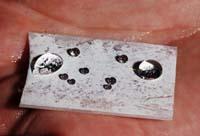
For its part, Nutralease of Israel has developed liquid nanostructures (NSSL) that are joined together to introduce nanoneal components in food. NSSL structures are grease spheres with an aqueous interior. This liquid mixes beneficial compounds for health such as lycopene, beta carotene, lutein, phytosterols, coenzyme Q10 or fatty acids DHA and EPA.
Other nanocaps have also been created with the same intention of adding beneficial compounds for health, without altering the appearance and flavor of food or drink. But they can also be used for other purposes, such as in the mouth to distribute the flavor well. In fact, some foods already contain capsules filled with tasty ingredients, which when opened in the mouth release the inside and give a lot of flavor. The use of nanocaps allows a better distribution of the flavor in the mouth, covering the whole tongue.
According to experts, in the coming years nanotechnology will have a great growth in the food industry. It is about to see if it will be similar to what is planned in other areas, or even if nanotechnology is going to develop what is expected, but it seems to have possibilities. Do you want to taste?
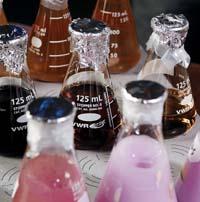

Gai honi buruzko eduki gehiago
Elhuyarrek garatutako teknologia



